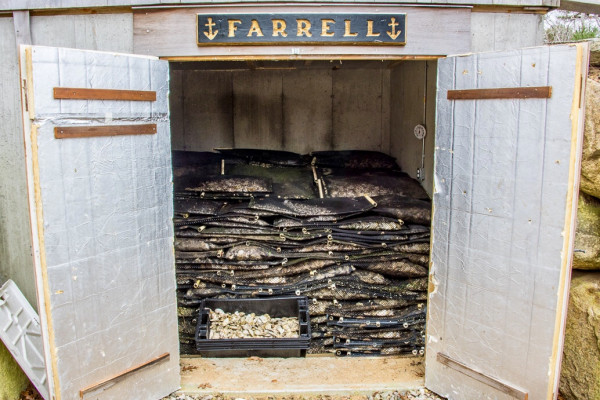
Nap time. These oysters will spend the winter in this comfortable pit, or shed, in Orleans. Photo by Christine Walsh Sanders Photography
Most people on the Cape are fond of a good oyster, and there certainly are plenty around. But fewer know that come winter, millions of oysters leave the flats — sometimes in boats, sometimes in all-terrain vehicles — to spend the cold, icy months out of the freezing bays. Not all oysters go; wild oysters fend for themselves, of course, and oysters grown by farmers in more sheltered areas are pulled into deeper waters. But in harsh environments, where ice can get so thick it can crush gear and “oysters condos” like houses of cards, protection means hauling inland. In this photo gallery by Christine Walsh Sanders, you can see an example of the trip oysters make, in this case to a relatively new barn in Orleans. They will make the return voyage in March.

Kyle Farrell sets out on one of approximately 50 to 60 round trips to his oyster grant to haul gear and retrieve the oysters for storage where they will remain until he brings them out in March.

There are more than 300 bags of oysters spread out over half an acre, which sits a half mile out in Cape Cod Bay.
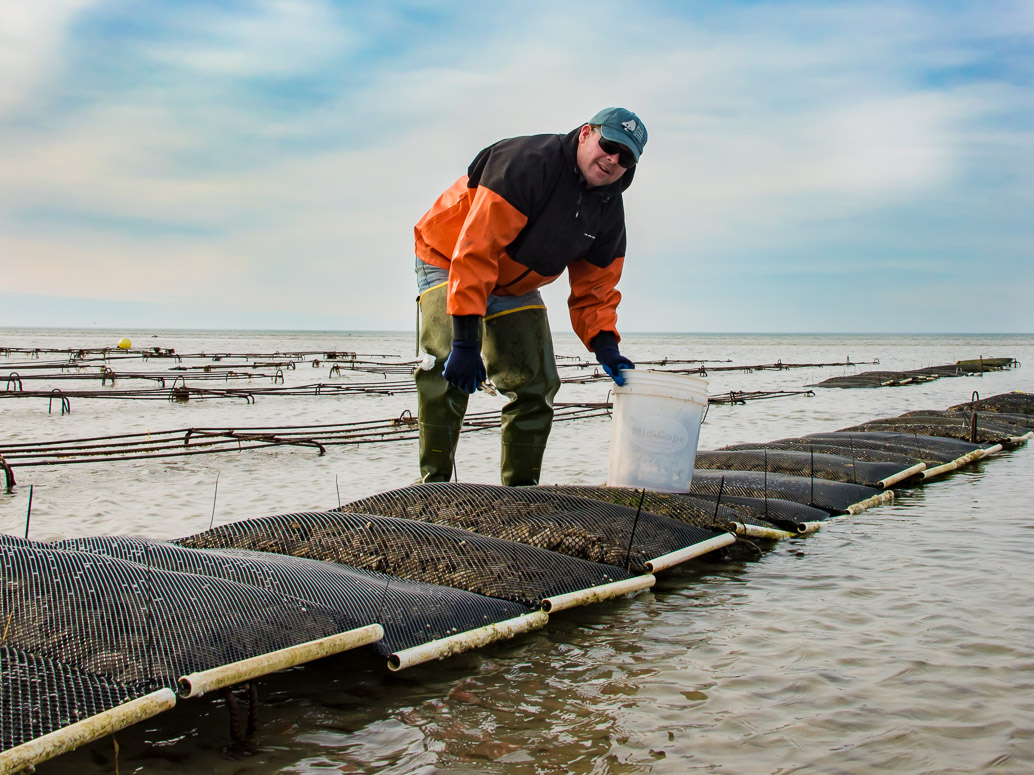
Kyle Farrell removes the bags of oysters from the racks (which he manufactures out of rebar) The racks remain embedded in the sand for the winter in the hopes that Mother Nature is kind to them.
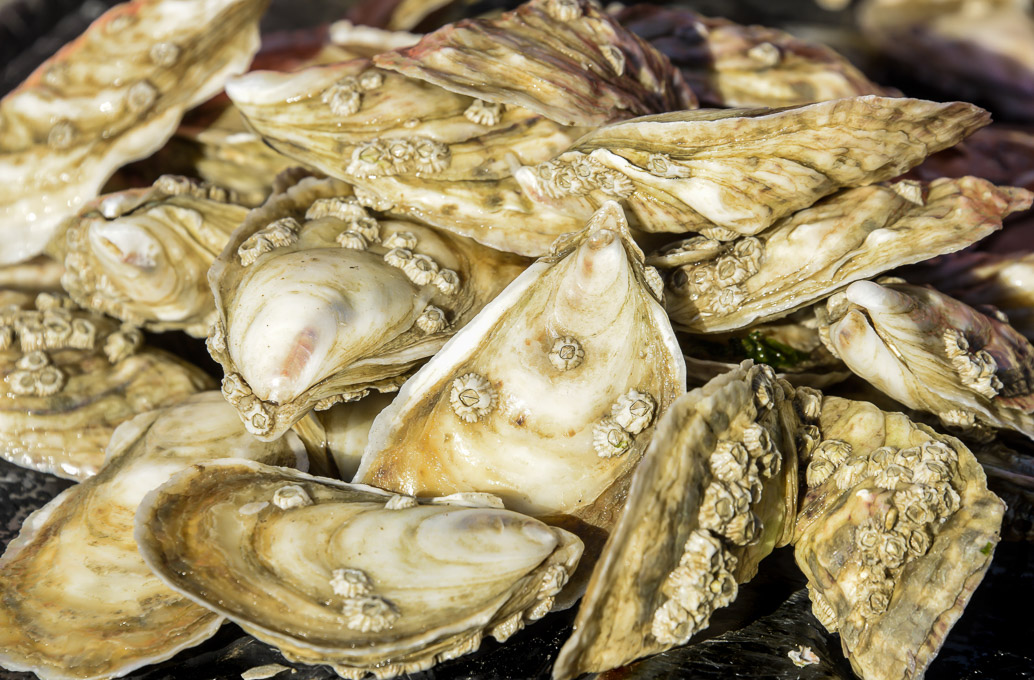
Rock Creek Oysters can be described as “briny,” “plump” and “deep cupped.”
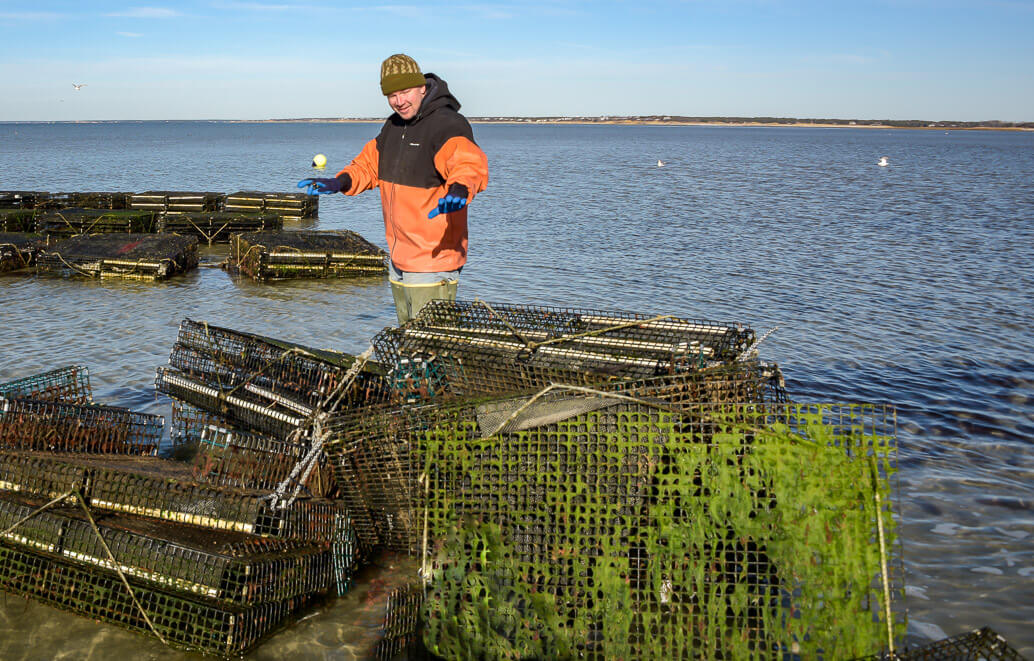
Kyle Farrell assesses damage sustained to the cages from a previous night’s storm in the hopes is that he can repair them over the winter..
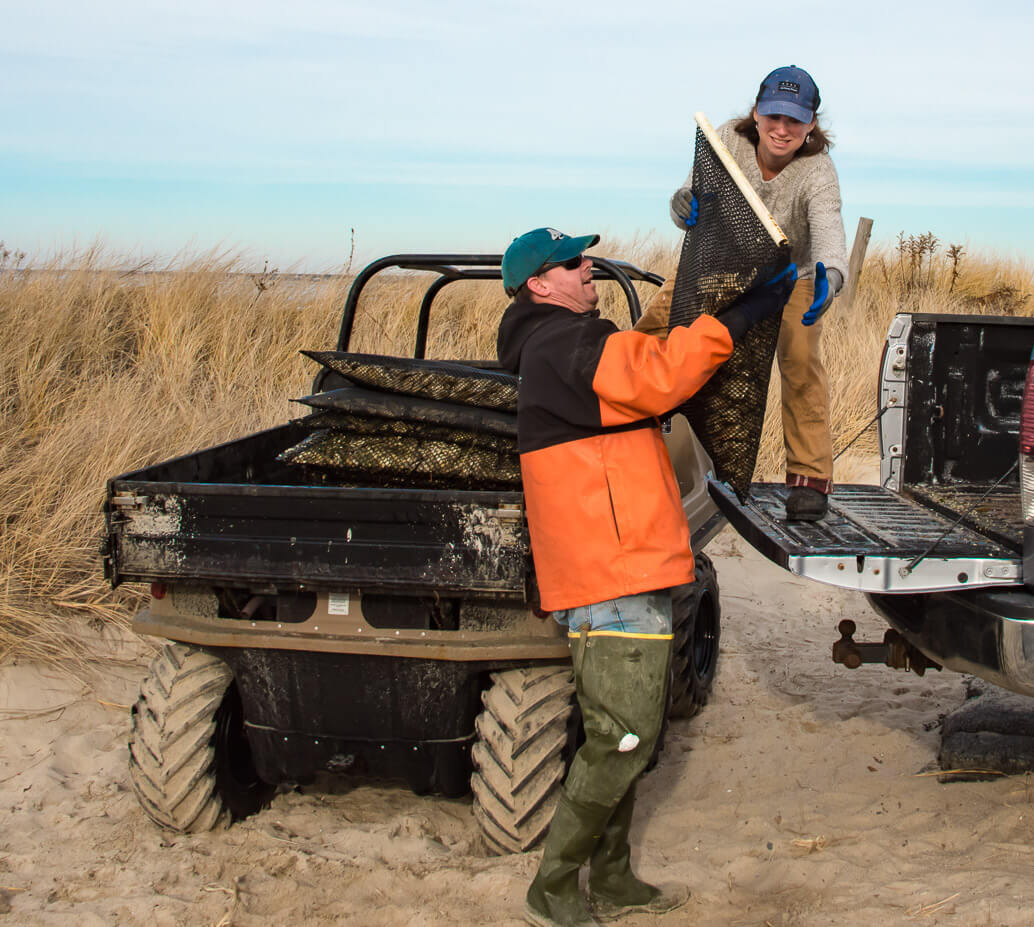
Wendy Farrell, Kyle’s wife and business partner, helps to unload the bags of oysters and cages into their truck where they will be transported to storage.

The oysters are organized within the farm by maturity levels, the smallest being the seedlings (spat) to the medium 2.5”, “Petites” and the largest 3” oysters known as “selects”.
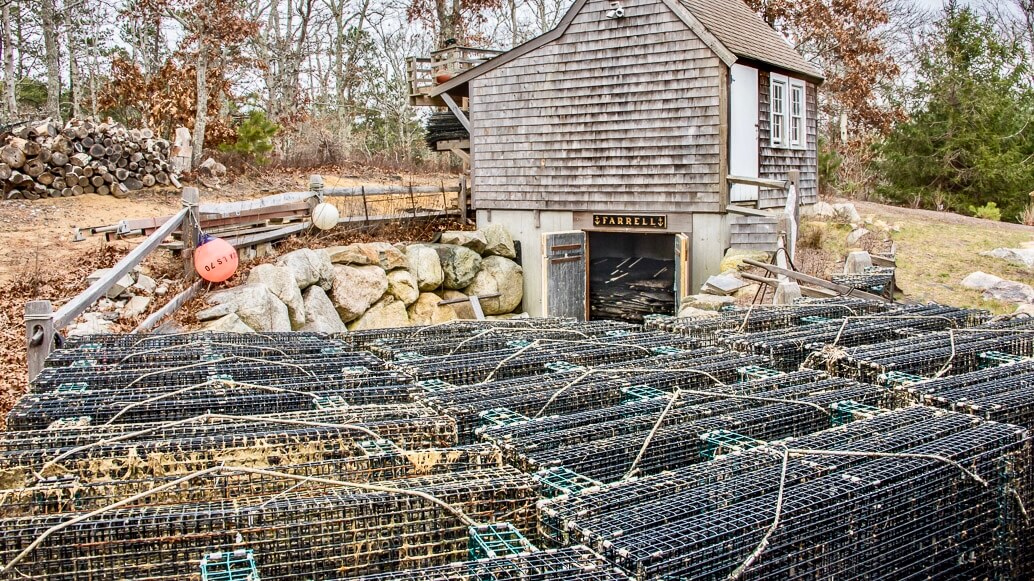
Because Cape Cod Bay can freeze over, oysters are stored in a root cellar where it is critical that the temp remains above 32 degrees, but below 50 degrees.
